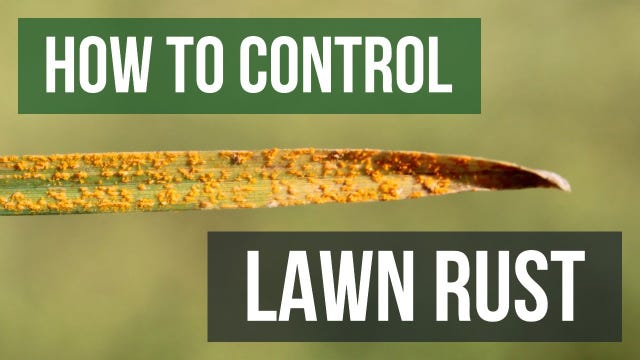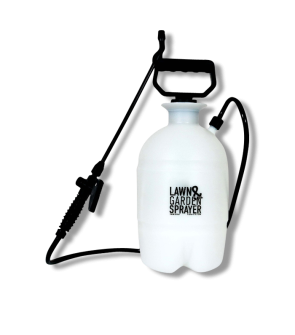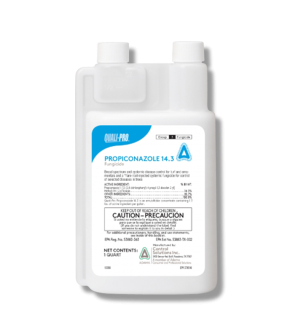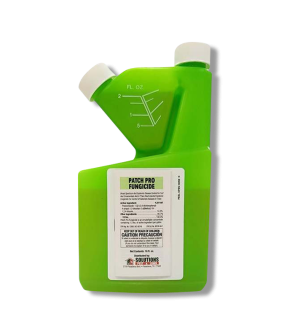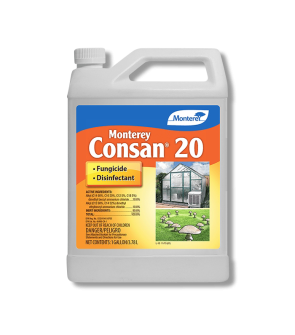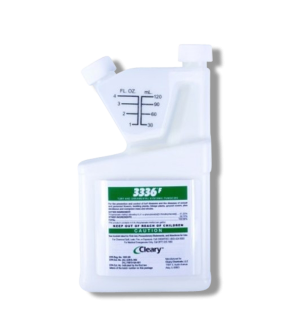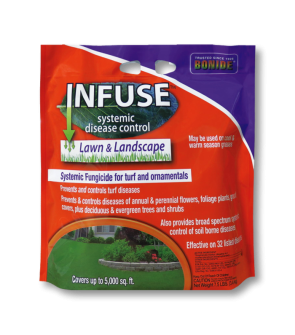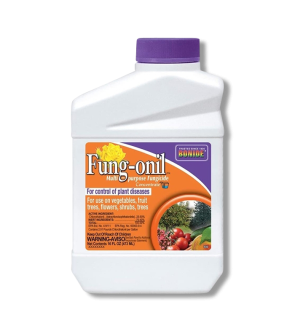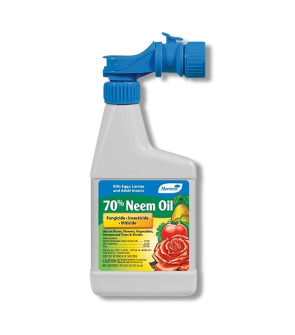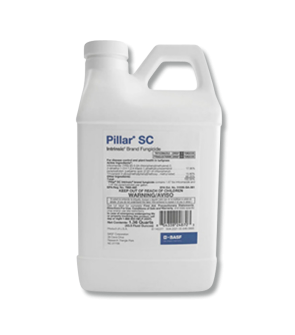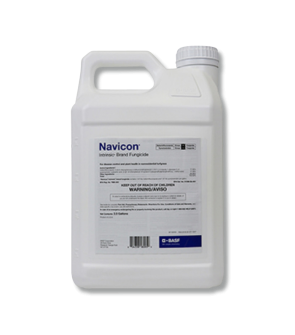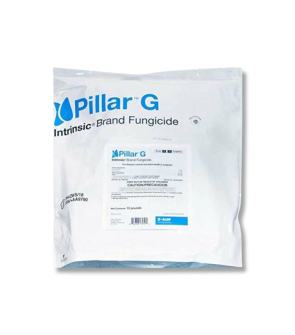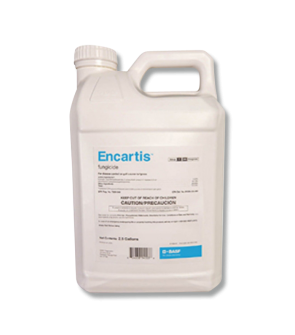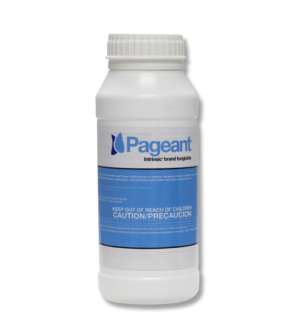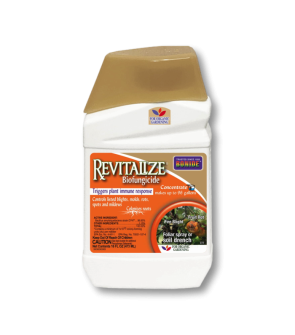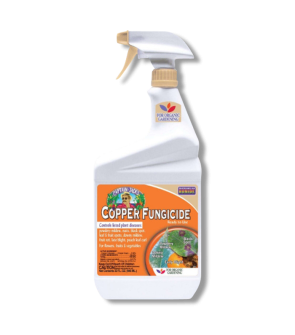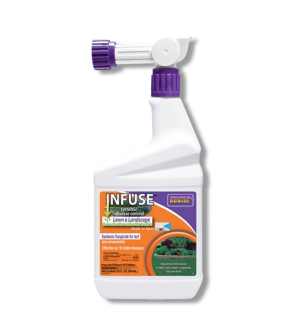Gain access to personalized product screening, the best pricing, rewards, and more!
Most Effective Products
Rust Control: How To Get Rid of Rust
Rust is a fungal disease that occurs on turf grasses when their growth has been slowed. Don’t let the name fool you; lawn rust is not the same as rust that appears on metals. It is merely a name that was given because the color of the lawn fungus resembles that of metallic rust. This lawn disease is usually felt in the late summer or early fall, during periods of dry weather, or when the grass is low on nitrogen. Rust can also occur when there is an excessive amount of moisture or dew present.
Fortunately, lawn rust is a cosmetic issue that doesn’t harm your grass. The orangish powder spores that characterize this fungus appear directly on grass blades and can easily come from shoes, clothing, lawnmowers, or anything that touches them. This mode of transportation allows the fungi to spread to other areas if not treated.
While it is an eyesore, you shouldn’t leave rust alone; you hope it goes away. Lawn rust can weaken the strength of the grass and make it vulnerable to other diseases and turf problems. If you have noticed rust on your lawn, our DIY treatment guide will show you how to eliminate it with professional fungicides.
Identification

Before proceeding with a treatment program, you must be certain you are dealing with a rust infestation. Careless identification can lead you to use the wrong treatment methods, wasting time and money. Below are some common characteristics to know what rust looks like:
- Rust fungus is quite easy to identify on turf and can be diagnosed by pulling a couple of blades out. The blades will have orange-reddish to yellowish-brown dust or spores caked onto them. The lawn rust starts initially with the leaf blades turning yellow and gaining small yellowish spots, which eventually turn orange, red, or brownish in color. The spores can be rubbed off the grass blades with a finger.
- Often, you will notice this rust on your shoes if you step on the grass with rust or the blades of your mowing equipment after cutting the grass. All in all, patches of grass that are infected by rust disease will start to thin and become weaker compared to healthy, unaffected grass.
- Rust lawn disease is caused by pustules. You can see the pustules when you look closely at the grass blades themselves. What happens is that when you disturb them with your lawn equipment or step over them with your shoes, those pustules burst spores, which get all over everything. Then, they’ll spread to the rest of the lawn and travel from lawn to lawn via commercial equipment.
Refer to the image above and our description to help you identify rust. If you are having trouble, contact us, and we'll help you correctly identify your issue.
Inspection

Where to Inspect
Various plants, from grasses to ornamentals to even evergreen plants, are vulnerable to rust fungus. Due to the ample space the turf covers, you can hardly miss rust problems on grass.
Rust spores usually form when cool nights with heavy dew and frequent rainfall occur. Warm, cloudy, wet conditions followed by a hot day with high heat from the sun beating down also help to formulate spores.
Basically, anytime the grass is not allowed to dry out after 6 to 8 hours, Rust begins to form. Grass rust problems also appear more frequently when lawn thatch is too thick, or mowing is not carried out frequently enough.
What To Look For
It looks like an orangish-brown powder caked onto grass blades and leaves. If you walk over your lawn, the rust fungi usually come off your shoes.
Treatment
Before treatment, we suggest wearing the proper safety equipment to prevent chemicals from contacting your eyes or skin. Gloves, safety goggles, and long-sleeved clothing should do.
The best way to treat rust on your lawn is to apply fungicide atop the areas where you see it developed. This will stop the disease in its tracks and help to clear it up faster.
Our top recommendation for treating rust is Patch Pro. Patch Pro contains propiconazole, a solid active ingredient that kills disease spores and pathogens effectively. It is also cost-effective and easy to apply.
Step 1: Measure & Mix Patch Pro

Patch Pro is a systemic fungicide that is absorbed into the infected plant, attacking the disease head-on without harming the vegetation.
To determine how much Patch Pro you need, you will need to measure the square footage of the target area. Measure the treatment area's length and width in feet, then multiply them together (length x width = square footage).
Patch Pro is labeled to treat Rust at a rate of 1 to 2 fl. oz. per 1,000 sq. ft. For preventative control, we recommend using 1 fl. oz. per 1,000 sq. ft. Use the 2 fl. oz. rate per 1,000 sq. ft for curative control.
For example, to treat 2,500 square feet of yard, you would need to mix 5 fl. oz. of Patch Pro in 2.5 gallons of water.
Step 2: Apply Patch Pro To Affected Areas

Apply Patch Pro to infected areas, spraying to wet (not to the point of runoff). The key is to focus on low-lying areas of the yard that get a lot of shade, as they are more susceptible to rust. You will also want to spray other vegetation around the infected area to prevent spores from spreading.
Patch Pro is a systemic fungicide that is absorbed into the plants, giving it a 30 to 90-day residual. Apply it once in the fall after the grass becomes dormant or in the early spring before the grass grows.
Use a fan nozzle setting to create a nice mist that coats the rust evenly. What’s most important when applying any fungicide you select is timing and attacking the disease in its early stages. You may need to reapply the application after 14 to 28 days to ensure the rust is gone.
Prevention
Once the rust is gone, you must work to avoid it by taking on some preventative techniques. Some preventative measures you can take to prevent rust from returning to your plants are explained below:
- Mowing your lawn at the proper height (around 3 to 4 inches), aerating your lawn occasionally to reduce soil compaction, raking your lawn to reduce thatch, and reducing shade as much as possible can help keep rust and other lawn diseases off of your turf.
- You should also water your lawn properly at a rate of 1 to 1.5 inches weekly, whether through rainfall or irrigation. Water your grass deeply once a week rather than a little every day to encourage stronger roots. You should also fertilize your lawn to keep your soil nitrogen and potassium levels stable and better equip your turf to fight disease.
- You can also use Patch Pro as a preventative application late in the summer before it usually appears. Ensure that you do not apply more than the maximum labeled rate of 16 oz. per 1,000 sq. ft. per year.
Key Takeaways
What is Rust?
- Rust is a lawn disease characterized by a brownish-red powdery substance caked onto grass blades and other plants.
How to Get Rid of Rust
- Our top recommended fungicide to control rust is Patch Pro. Timing is important when applying this product for best results.
Prevent Rust Reinfestation
- Once your lawn has been treated, a consistent lawn care and maintenance program and application of nitrogen-rich fertilizer will keep rust from returning and keep your turf strong and healthy.






